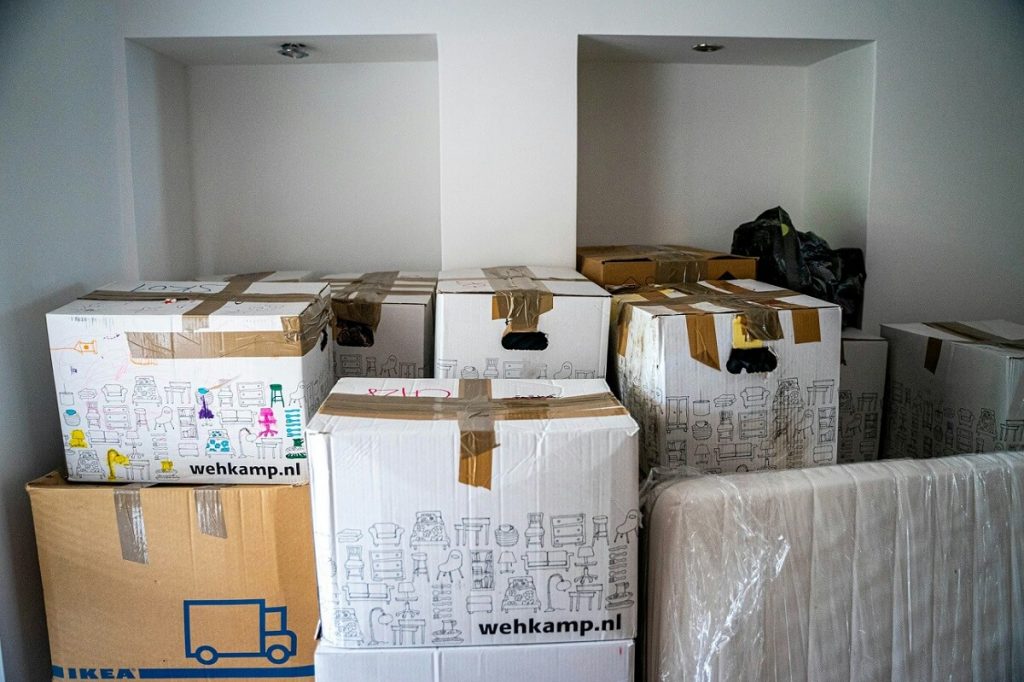No matter if your business is expanding, relocating across the country, or downsizing to optimise costs, your office move will be a significant time and money investment. We can help turn this stressful time into a smooth operation from start to finish – read our office move checklist below and learn the best ways to keep your move and business on track during the chaos:
Planning An Office Move - Step-By-Step Checklist
1. Timeline
The first step in planning an office move is establishing a step-by-step timeline, backward from your move date. Here’s an example:
- 6-12 months before – conduct lease negotiations and start planning your relocation
- 3-6 months before – choose a professional moving company and begin inventory of all goods (furniture, electronics) that need to be transported
- 2-3 months before – go through your goods inventory and purge unnecessary items
- 1-2 months before – order packing supplies, start labelling your goods
- 1-2 weeks before – start packing – we recommend scheduling pack meetings with departments
- On the day – supervised relocation, final IT checks, and setting up the new office
We have provided a more detailed office move checklist below, so you can get a better idea of what to expect at each step. Keep this timeline on hand to keep track of your operation.
2. Logistics
To make sure everything goes smoothly, it’s a good idea to set up a dedicated relocation committee to oversee the process. This involves assigning key personnel to various roles and responsibilities, covering all aspects of the move. This may include:
- Project Manager – ensures timelines are met and oversees the project
- IT Lead – manages data migration, office equipment relocation, and network setup
- Facilities Manager – covers aspects such as space planning and furniture logistics
- HR Representative – deals with employee communication, taking care of staff well-being during the move
- Finance Manager – looks over budgeting, vendor contracts, and cost control
Your dedicated team should do frequent check-ins to keep progress on track. Meet up biweekly or monthly to review the status of each task, address any challenges, or adjust your strategy where needed.
3. Packing And Labelling
No matter if you’re moving offices across the country or just down the street, you will need to make sure everything is carefully packed to avoid any unpleasant surprises. While definitely time-consuming, proper packing can not only prevent damage during transit, but it can also help make unpacking a lot easier, as you’ll know where everything is and where to set it up.
Here are a few tips on how to make the packing and labelling process infinitely easier:
- Create a digital inventory spreadsheet, logging the goods for each department
- Colour-code each department or office area, and use descriptive labels when packing to know where everything is
- Label any fragile equipment, so your specialist movers know to handle it with extra care
- Take photos of complex setups so you can easily recreate them when setting up the new office
- Identify items that can be disposed of or donated
As a quick guide, here are some packaging materials you should have on hand:
- Color-coded labels
- Specialty computer/electronics boxes
- Document boxes
- Furniture blankets and padding
- Plastic wrap
- Cable ties and labels
- Anti-static bags
4. IT & Technology
When moving IT equipment, you’ll need to be extra careful how you handle things. Make sure you safely disconnect everything and pack computers, printers, and everything else carefully to prevent damage during transportation.
On top of moving the hardware, make sure you securely back up all your data and files, so you can easily bring things back on track as soon as the move is complete.
5. Budget Planning
Moving office involves lots of costs you should be aware of.
First and foremost, you’ll need to consider hiring a professional moving team with experience in commercial moves specifically – a team that knows the ins and outs of how to make your transition as easy as possible. Packing services, as well as transportation costs, should be accounted for when setting up a moving budget.
Your move budget should cover other essential expenses, such as lease and legal fees, insurance company fees, any tech security (e.g. internet setup, server migration, or cybersecurity measures), as well as a contingency fund for unforeseen delays and last-minute expenses.
6. Communication
A smooth transition involves a thorough communication plan. Your employees should be the first to know about the move – give them as much notice as possible so they can plan their work accordingly. Also provide details related to any changes to their working arrangements, such as flexible hours or remote working during the move.
Notify clients of your move, and clarify whether that will affect service delivery or client meetings. Your priority should be reassuring each client that their needs will still be met, and that your partnership will stay just as strong (or perhaps become even stronger).
Don’t forget to reach out to service providers and notify them of your relocation. This includes:
- IT service providers
- Office cleaning & maintenance
- Utility providers
7. Choose A Professional Office Relocation Service
The relocation process involves lots of moving parts. From handling all the logistics to carefully packing delicate equipment, planning it all without expert help might prove challenging.
A dedicated commercial office removals team can bring all the knowledge and expertise you need to ensure the moving process flows as smoothly as possible. Your relocation team can assist with packaging, loading, and unloading, carefully handling your equipment to minimise breakages.
At Bennett Removals, we have decades of experience in managing office removals, from managing logistics to handling IT infrastructure, packing & unpacking, and secure transportation. Instead of trying to manage everything with limited staff, you’ll receive extensive support at every stage.
You won’t have to worry about every small logistical detail, and can instead stick to what truly matters for your business success.

The Ultimate Office Move Checklist - What To Expect At Every Stage
Here is a quick office relocation checklist for easy reference, so you can keep it on hand during those stressful days:
6-12 months before
- Review your office lease
- Set your budget for the move
- Set out a plan to decommission the old office – this means cleaning, repairs, removing branding, etc.
- Start looking for office spaces that match the needs of your business – make sure you get a detailed floor plan for the space.
- Plan your new office layout.
- Research local moving companies and request quotes to compare
- Assess whether you need moving insurance for fragile equipment and machinery
3-6 months before
- Select your moving company
- Draft an inventory of all goods in your current office
- Notify all your team members, your current landlord and property manager, as well as key stakeholders and clients of your move
- Delegate roles for a project management/planning team within your business
- Book a moving date with your chosen moving company
1-2 months before
- Order packing supplies such as boxes, bubble wrap, colour-coded labels, etc.
- Clearly define and label communal spaces on your new floor plan
- Gain access codes for the new premises.
1-2 weeks before
- Create a detailed moving day plan for your staff to follow
- Draft a list of emergency contact numbers and provide these to everyone involved in the move
- Disassemble any tech equipment and office furniture (if required)
- Pack non-essential items (e.g. office supplies), making sure each box is labelled with its contents
On the day
- Assign team members to supervise loading and unloading at both locations.
- Ensure IT professionals are present to assist with the IT setup
- Perform a final walkthrough at the old office, checking for any remaining items and documents, as well as any potential damage
- Set up essential services and equipment at the new office – this includes workstations, Wi-Fi, and telecommunication systems
All that’s left is to organise an office warming party for your employees and celebrate this new beginning together.
A thorough checklist for your office move helps everyone on-site continue their work without any hindrances or unnecessary downtime, and keeps clients happy during this chaotic time.
Bennett Removals can help with business relocation services even during weekends or out-of-office hours, to ensure minimal impact on your business operations. Get in touch with us today, and we’ll provide a free, no-obligation quote for your move.




